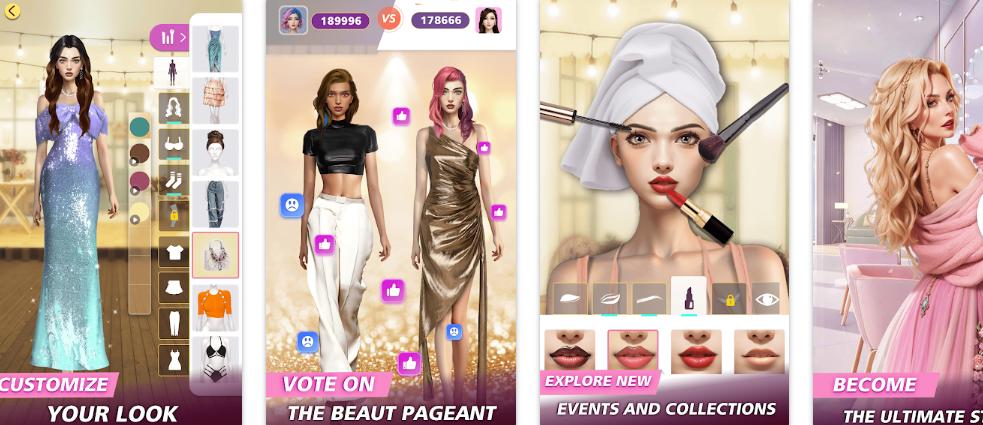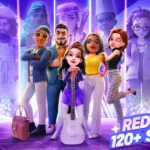The realm of fashion dress-up and girl makeover games has blossomed into a vibrant and dynamic digital playground. More than just simple distractions, these interactive experiences have evolved into sophisticated platforms for creativity, self-expression, and even learning. As we step into April 2025, the latest updates in this genre showcase a fascinating blend of cutting-edge technology, inclusive design, and engaging gameplay that continues to captivate players of all ages.
A Look at the Latest Trends (April 2025)
The current landscape of fashion dress-up games is characterized by several key trends. One significant development is hyper-personalization, where games now offer an unprecedented level of customization. Players can fine-tune everything from facial features and body types to intricate details of clothing and accessories. The ability to create avatars that truly reflect individual identities is a major draw, with some games now featuring diverse skin tones, hair textures, and body shapes, allowing for a more inclusive and representative experience.

Another key trend is the integration of immersive storylines and narrative gameplay. Moving beyond simple dress-up scenarios, many games are incorporating rich storylines and engaging narratives. Players might take on the role of a budding fashion stylist, a celebrity preparing for a red-carpet event, or a designer managing their own virtual boutique. These narratives provide context and purpose to the styling choices, making the gameplay more immersive and rewarding.
Furthermore, there’s an increasing integration of real-world fashion trends, with developers collaborating with actual fashion brands and designers to bring authentic styles into the virtual world. This allows players to experiment with current trends and even discover new designers, with some games even featuring virtual shopping experiences where players can find inspiration for their real-life wardrobes. Social interaction and competitive elements are also prominent, as many modern dress-up games incorporate social features, allowing players to connect with friends, share their creations, and participate in styling competitions.
This adds a layer of engagement and encourages players to hone their styling skills, with features like voting on other players’ looks and receiving feedback fostering a sense of community and healthy competition. Finally, technological advancements are continuously shaping the genre, with the use of advanced graphics and animation techniques creating more visually stunning and realistic experiences. Some games are even exploring the integration of augmented reality (AR), allowing players to project their virtual creations onto the real world, holding immense potential for future development, even in its early stages for this genre.
Recent Updates and Noteworthy Features (April 2025)
Recent updates across various popular fashion dress-up games highlight these trends in action. Enhanced avatar customization is a common theme, with several leading games introducing more granular control over avatar features. Players can now adjust individual facial features like the shape of the eyes, nose, and lips, as well as experiment with a wider range of makeup options, including intricate eyeshadow palettes and lip art. Body shape customization has also become more detailed, allowing for a greater variety of body types. Dynamic styling challenges are also becoming more prevalent, with games moving beyond static themes and introducing challenges that respond to in-game events or player choices. For example, a game might feature a storyline where the player needs to style a character for a last-minute invitation to a gala, requiring quick thinking and creative use of their virtual wardrobe.
The rise of virtual influencer collaborations is another noteworthy update, with some games partnering with these digital personalities, allowing players to style them for various virtual events and photoshoots, blurring the line between the virtual and real worlds of fashion and providing unique styling opportunities. Interactive wardrobe management has also seen improvements, as managing a vast virtual wardrobe can be challenging, and recent updates have focused on improving organization and search functionalities. Features like tagging items by style, color, or occasion, as well as advanced filtering options, make it easier for players to find the perfect pieces for their looks.
To add variety to the core dress-up gameplay, many games now include engaging mini-games and side quests. These can range from designing patterns and creating mood boards to participating in virtual fashion shows and photoshoots, offering additional rewards and challenges. For instance, a recent update in “Fashion Week 2025” (as seen on CrazyGames) introduced a “Style Influencer” storyline where players must create looks that resonate with their virtual followers, taking into account current social media trends and feedback. Another game, “Fashion Stylist: Dress Up Game” (available on Google Play), now features weekly special events with unique themes and exclusive rewards, encouraging players to constantly adapt their styling strategies.
The Psychological and Educational Dimensions
Beyond entertainment, fashion dress-up games offer several psychological and educational benefits, particularly for younger players. These games provide a safe and fun environment for self-expression and creativity, allowing individuals to explore different aspects of their identity and experiment with various styles without real-world consequences. The freedom to mix and match clothing, makeup, and accessories fosters creativity and allows players to express their unique aesthetic sensibilities. Decision-making and problem-solving skills are also developed as players choose the right outfit for a specific occasion or adhere to a particular theme, learning to consider different elements of fashion and how they work together to create a cohesive look.
Many games contribute to understanding social norms and context by presenting scenarios that require players to dress characters appropriately for different social situations, helping them understand the nuances of fashion in various contexts. The act of selecting, dragging, and arranging virtual clothing and accessories can help develop fine motor skills and hand-eye coordination, especially in younger players. Furthermore, some games facilitate learning about fashion history and culture by incorporating historical or culturally specific clothing items, offering players a subtle way to learn about different fashion eras and global styles. As noted by experts in child development, dress-up play, both physical and virtual, encourages imagination, storytelling, and social-emotional growth, and online dress-up games extend these benefits by offering a wider range of options and the opportunity to interact with a global community.
The Future of Fashion Dress Up Games
The future of fashion dress-up games looks incredibly promising, with several potential avenues for innovation. We can expect to see enhanced AR integration that allows players to seamlessly integrate their virtual creations into the real world, perhaps even trying on virtual outfits or sharing their designs in real-time with friends. AI-powered styling assistance could play a significant role in providing personalized styling advice, suggesting outfit combinations based on current trends, the player’s existing virtual wardrobe, or even their real-world preferences. Games might evolve to include more robust virtual fashion design tools, allowing players to create their own clothing items and accessories from scratch, fostering a deeper level of creativity and personalization.
As the metaverse continues to develop, fashion dress-up games could become integral parts of virtual social experiences, allowing avatars to express their style in interconnected digital worlds. Finally, future games might incorporate sustainability and ethical fashion themes, educating players about responsible consumption and the impact of the fashion industry.
Conclusion
In conclusion, the fashion dress-up and girl makeover genre has come a long way, evolving from simple digital paper dolls to complex and engaging interactive experiences. The latest updates in April 2025 reflect a continued focus on personalization, immersive gameplay, and social connectivity. These games not only provide entertainment but also offer valuable opportunities for self-expression, creativity, and even learning. As technology advances and player expectations evolve, the future of this genre promises even more exciting and innovative ways to explore the ever-fascinating world of fashion in the digital realm.
